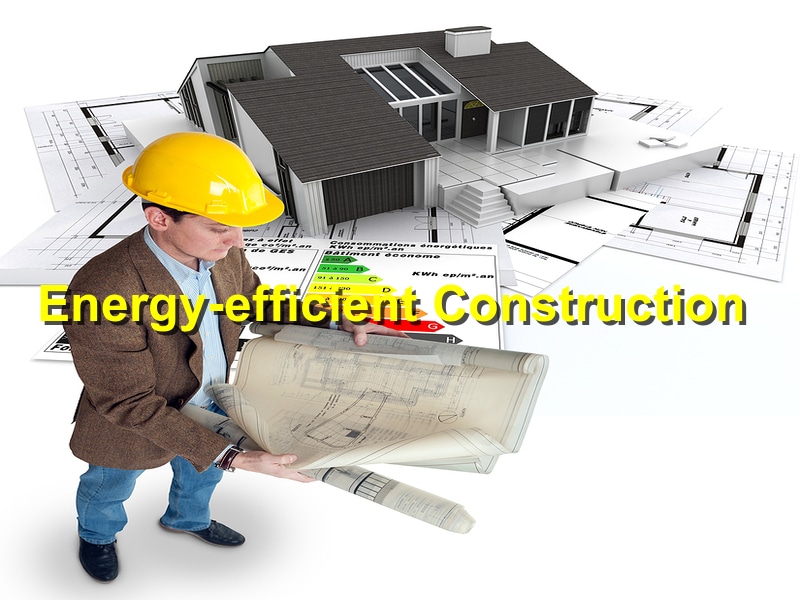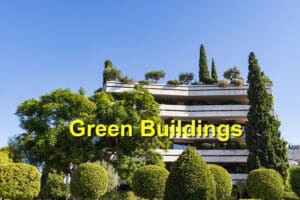Energy-efficient construction is more than just a trend; it is a crucial approach to building that offers a multitude of benefits for homeowners, businesses, and the environment. Incorporating sustainable practices and technologies in construction can lead to significant cost savings, improved comfort, and a reduced environmental footprint. Here’s a closer look at the key advantages of energy-efficient construction.
1. Cost Savings
One of the most compelling benefits of energy-efficient construction is the potential for cost savings:
- Lower Utility Bills: Energy-efficient buildings use less electricity, water, and gas, which translates to lower utility bills for homeowners and businesses.
- Reduced Maintenance Costs: High-quality, energy-efficient materials and systems often require less maintenance and have longer lifespans, reducing long-term upkeep costs.
- Increased Property Value: Energy-efficient homes and buildings are often more attractive to buyers, leading to higher property values and quicker sales.
2. Environmental Impact
Energy-efficient construction significantly reduces the environmental impact of buildings:
- Lower Carbon Emissions: By using less energy, energy-efficient buildings emit fewer greenhouse gases, contributing to the fight against climate change.
- Resource Conservation: Sustainable building practices prioritize the use of renewable resources and reduce waste, conserving natural resources.
- Water Efficiency: Energy-efficient buildings often incorporate water-saving fixtures and systems, reducing water consumption and preserving this vital resource.
3. Enhanced Comfort and Health
Energy-efficient buildings provide a more comfortable and healthier living or working environment:
- Improved Indoor Air Quality: Efficient HVAC systems and proper ventilation reduce indoor pollutants and allergens, leading to better indoor air quality.
- Consistent Temperatures: High-performance insulation and windows help maintain consistent indoor temperatures, reducing drafts and cold spots.
- Natural Lighting: Energy-efficient designs often maximize natural light, reducing the need for artificial lighting and creating a more pleasant indoor environment.
4. Incentives and Rebates
Many governments and organizations offer incentives and rebates for energy-efficient construction:
- Tax Credits: Homeowners and businesses can benefit from federal, state, and local tax credits for implementing energy-efficient improvements.
- Rebate Programs: Utility companies and government agencies often provide rebates for energy-efficient appliances, lighting, and building materials.
- Grants and Financing: Various programs offer grants and favorable financing options for energy-efficient construction projects.
5. Long-Term Sustainability
Energy-efficient construction supports long-term sustainability goals:
- Durable Materials: Sustainable construction often utilizes durable, high-quality materials that extend the lifespan of buildings.
- Future-Proofing: Energy-efficient buildings are better equipped to handle future energy needs and potential regulatory changes.
- Resilience: These buildings are designed to be more resilient to extreme weather conditions, reducing the risk of damage and costly repairs.
6. Competitive Advantage
For businesses, energy-efficient buildings can provide a competitive edge:
- Brand Image: Companies that invest in energy-efficient buildings demonstrate a commitment to sustainability, enhancing their brand image and appeal to eco-conscious consumers.
- Employee Satisfaction: Improved indoor environments can lead to higher employee satisfaction, productivity, and retention.
- Operational Efficiency: Lower operating costs and improved resource management contribute to overall business efficiency.
7. Innovation and Technology
Energy-efficient construction drives innovation and the adoption of new technologies:
- Smart Building Systems: Integrating smart technologies like automated lighting, heating, and cooling systems optimizes energy use and enhances building performance.
- Renewable Energy Integration: Energy-efficient buildings often incorporate renewable energy sources such as solar panels and wind turbines, further reducing reliance on fossil fuels.
- Advanced Materials: The use of advanced building materials, such as insulated concrete forms (ICFs) and high-performance glazing, improves energy efficiency and building performance.
8. Regulatory Compliance
As energy efficiency standards and regulations become more stringent, energy-efficient construction helps ensure compliance:
- Building Codes: Many regions have updated building codes that require higher energy efficiency standards, and energy-efficient construction practices help meet these requirements.
- Environmental Certifications: Energy-efficient buildings can achieve certifications such as LEED (Leadership in Energy and Environmental Design) and ENERGY STAR, which recognize and reward sustainable building practices.
Conclusion
Energy-efficient construction offers a wide array of benefits, from significant cost savings and enhanced comfort to reduced environmental impact and compliance with regulations. By adopting sustainable building practices and technologies, homeowners and businesses can create healthier, more resilient, and more valuable properties. The move towards energy-efficient construction is not just a smart economic decision but also a crucial step towards a more sustainable and environmentally responsible future. Investing in energy efficiency today paves the way for long-term benefits and a better quality of life for all.
References: LinkedIn, Humanitarian Library




